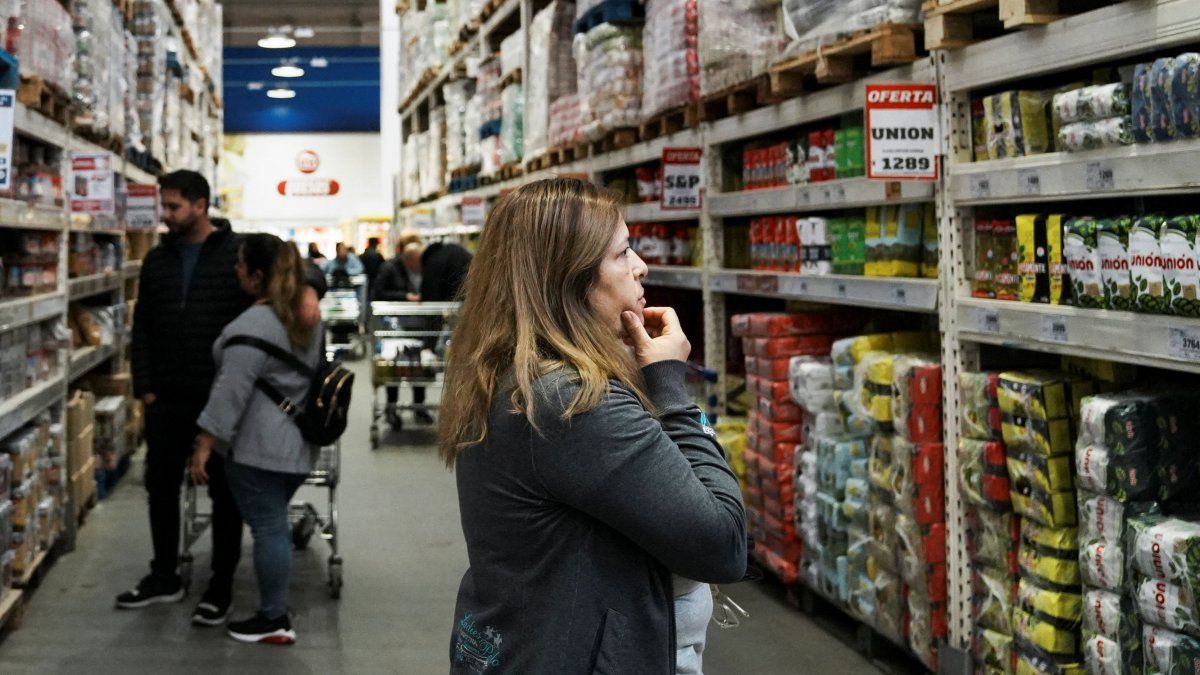“According to the Market Expectations Survey (REM)the projection for monthly inflation to December is 3.8% and for the core category it is 3.4%. That is, a priori, there is no prospect of reaching the 2% monthly rate that the government is aiming for, in line with the variation in the exchange rate. It is perhaps more in line with the performance of market interest rates. That said, The question is whether the Government will make the decision to align inflation, rates and the dollar around 3%“, he detailed.
The headline CPI slowed in July, but core inflation stagnated
In the seventh month of the year, prices rose by 4%, According to the INDECthus reaching a minimum since January 2022. Within the divisions that have the greatest impact on the Consumer Price Index (CPI), the largest increases were verified in restaurants and hotels (+6.5%) and housing (6%)highlighting in the latter the increase in the value of rents and water.
On the contrary, in other areas with a lot of weight such as food, transport and outfit below-average increases were observed.
Although the general CPI slowed down again, after the rebound it had in June, one fact to keep in mind is that The core CPI, which does not take into account regulated prices or seasonal factors, rose by 3.8%, 0.1 percentage points above the figure for the previous two months.
“The stagnation of the core is a worrying fact; I wouldn’t dare to talk about a floor yet, but it will be something to keep an eye on next month,” EcoGo economist told this newspaper, Rocio Bisang.
New increases in regulated prices
In July they were the seasonal prices those that showed the most upward pressure, with a rise of 5.1%, due to increases in fruits, vegetables, tubers and legumes. Meanwhile, regulated They also rose above average, 4.3%, driven by corrections in utility and cigarette rates.
In addition, There were already new increases in August in regulated items that can put a stop to the deflationary dynamic, such as gasoline (3% at the national level and 5% in the City of Buenos Aires), rates (between 4% and 5%), prepaid health plans (up to 7.9%) and transportation (almost 40% in buses).
Inflation: What to expect in August?
CREEBBA’s general CPI projects 4% for August, when in July it had reached 4.2%. Although in the first half of the month food prices rose 3.9%, above the figure for the first half of July, the rest of the items were at 3.8%, which is why the consultancy believes that price increases could reach 4%.
In parallel, the consulting firms and financial entities that participated in the latest REM expects 3.8% for the current month.
Bisang stressed that EcoGo expects that increases in fares and transportation, particularly in buses, will boost inflation in August. “For now We are predicting that it would be 4.1%quite similar to this month,” he added.
Caprarulo said that “tariffs are a factor that determines the inflationary floor.” They do not yet have the values that the Government is looking for, similar to those of 2019, and their recomposition is key to the fiscal result“, he added.
Along the same lines, Semilla warned that “The possible fiscal deficit data for July may perhaps lead to a strong cut in subsidies, implying increases in the regulated category and therefore in the general CPI.“It remains to be seen whether the updates will be made all at once or gradually,” he added.
For September, there are analysts who think that the 10 percentage point reduction in the COUNTRY tax could contribute to the reduction of inflation since it would reduce the costs of imported products. “The reduction of the PAÍS Tax It is one of the Government’s bets to drill the 4%. So much so that in fiscal terms and in terms of commercial results it has a negative effect,” Caprarulo stressed.
In this regard, Bisang projects that “it may have a positive effect, particularly on imported products, but the transfer will not necessarily be complete.” “Beyond that, it will also depend on what happens with the official dollar: the drop gives the Government room to devalue and reduce the gap, and that would neutralize the effect on prices,” he warned.
Recession, the (negative) reason that influences the disinflationary process
Since Javier Milei arrived at the Casa Rosada in December last year, inflation has accumulated 134.5%. Increases in tariffs and transport, two areas that were the focus of the relative price adjustment that the Government wanted to implement, provided the main upward impacts, with jumps of 197% and 169%, respectively.
Meanwhile, Food prices rose 128% since December. After soaring by almost 30% following the devaluation at the end of 2023, prices in this division have been showing below-average increases.
In parallel, Wages were one of the variables that functioned as an anchor inflation (as well as the exchange rate), since they did not evolve at the same pace. In fact, the income of registered workers lost almost 10% between December and Junewith the loss among state employees standing out in particular, although a slight increase has been observed since April.
Source: Ambito




